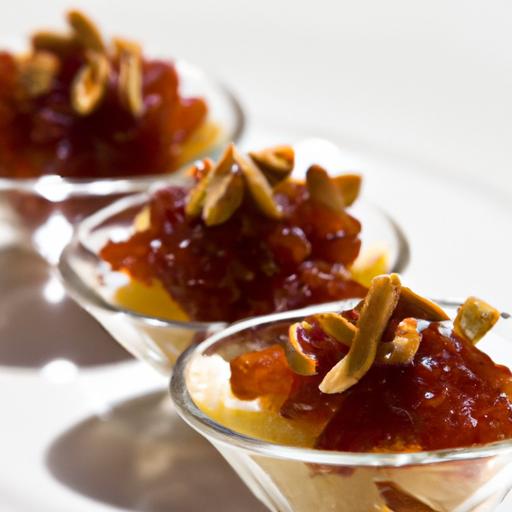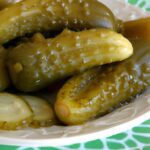There’s nothing quite as disappointing as a batch of homemade jam that refuses to set-the vibrant colors and sweet aroma teasing your taste buds, only to leave you with a gloopy, sticky mess. But before you despair and toss that pot of precious fruit away, take a breath. Jam that didn’t set isn’t the end of your preserve-making journey; it’s simply a sign that something went a little sideways. Whether it’s a matter of pectin, cooking time, or acidity, the good news is that most jams can be rescued with a few straightforward tweaks. In this article, we’ll unravel the mysteries behind why your jam didn’t gel and share easy, practical fixes to transform that runny concoction into the luscious spread you dreamed of. Ready to turn sticky setbacks into sweet success? Let’s get stirring!
Troubleshooting jam that didn’t set can be frustrating, especially when you’ve poured your heart into preserving summer’s sweetest fruits. Yet, with a little patience and technique, even runny jam can be revived into a luscious spread worthy of toast, scones, or dollops atop yogurt. Understanding the essential ingredients and their roles gives you the power to transform a failed batch into a success story while avoiding future setbacks.
Prep and Cook Time
Preparation: 15 minutes
Cooking: 30-40 minutes
Total Time: 45-55 minutes
Yield
About 4 half-pint jars (8 servings)
Difficulty Level
Medium
Ingredients
- 3 cups of fresh fruit (e.g., strawberries, raspberries, or apricots), hulled and chopped
- 1 ½ cups granulated sugar
- 2 tablespoons lemon juice, freshly squeezed
- 1 packet (1.75 oz) powdered fruit pectin (or as recommended on package)
- ½ cup water (for dissolving pectin)
- Optional: 1 teaspoon butter (to reduce foaming)
Instructions
- Prepare your ingredients: Wash and chop the fruit into small pieces to release their natural juices and ensure even cooking.
- Dissolve the pectin: In a small saucepan, combine the powdered fruit pectin with ½ cup water. Stir and bring to a gentle boil over medium heat, then remove from heat.
- Cook the fruit and sugar: Place chopped fruit, sugar, and lemon juice in a large, heavy-bottomed pot. Stir well. Bring the mixture to a rolling boil over medium-high heat, stirring constantly to prevent sticking.
- Add the pectin: Slowly stir the dissolved pectin into the boiling fruit mixture. Return to a vigorous boil and cook for exactly 1-2 minutes, stirring continually. You’ll notice the jam thickening.
- Check the consistency: To test, place a small amount of jam on a chilled plate and let it cool for a minute. Run your finger through it-if it wrinkles and stays separated, it’s ready. If runny, continue boiling for 1-2 minutes and test again.
- Skim any foam: Remove any foam on top using a spoon. Adding a teaspoon of butter at the beginning helps reduce foaming for cleaner finishing.
- Jar and cool: Pour the hot jam into sterilized jars, leaving ¼-inch headspace. Wipe rims clean, seal tightly, and invert jars for 5 minutes to sterilize lids. Let them cool completely at room temperature before storing.
Tips for Success: Expert Guidance on Troubleshooting Jam That Didn’t Set
- Fruit acidity is key: Lemon juice provides natural acid needed to activate pectin. Too little acid makes jellies soft. Always add freshly squeezed lemon juice to balance sweetness and encourage setting.
- Measure precisely: Sugar and pectin ratios are vital. Excess sugar can interfere with the setting process, while too little results in watery jam.
- Use the right pectin: Different fruits require different pectins (regular, low-sugar, or no-sugar added). Make sure your pectin matches your fruit and sugar amounts.
- Reviving Runny Jam: Mix 1-2 tablespoons of powdered pectin with ½ cup water and bring to boil. Stir into your cooled runny jam and boil 1-2 minutes until thickened. Retest consistency to confirm success.
- Patience pays off: Jam continues to thicken as it cools, sometimes needing 24 hours to set fully.
Serving Suggestions
Elevate your homemade jam by spreading it thickly over freshly toasted artisan bread, warm croissants, or buttery scones. A dollop atop creamy yogurt or vanilla ice cream melts into a sweet, fruity topping. Garnish with fresh herbs like mint or a sprig of thyme to add a fragrant, gourmet twist.
| Nutritional Info (per serving) | Calories | Protein | Carbohydrates | Fat |
|---|---|---|---|---|
| Homemade Jam | 90 | 0.5g | 22g | 0g |
For deeper insights on fruit pectin varieties and jam science, visit the University of Minnesota Extension on High-Quality Jams and Jellies.
Looking to explore more fruit preserves? Check out our article on Homemade Fruit Jelly Recipes to keep your kitchen adventures thriving.

Q&A
Q&A: Troubleshooting Jam That Didn’t Set – Easy Fixes Explained
Q1: Why didn’t my jam set properly?
A1: Your jam may not have set due to insufficient pectin, incorrect sugar levels, or not cooking it long enough. Pectin and sugar work together to form the gel, while adequate cooking helps the mixture thicken.
Q2: How can I tell if my jam has set correctly?
A2: The classic test is the “wrinkle test.” Place a small spoonful of jam on a chilled plate and let it cool for a minute. Push it gently with your finger-if it wrinkles and holds shape, it’s set. If it runs or stays liquidy, it needs more cooking.
Q3: What’s the quickest fix if my jam didn’t set after the first boil?
A3: Simply return your jam to the stove and cook it a bit longer, stirring frequently to avoid burning. You can also add a bit more pectin or lemon juice to boost the gel formation.
Q4: Can I save jam that’s too runny by adding pectin?
A4: Yes! Add powdered or liquid pectin according to the package instructions during a re-boil. This usually saves the batch without compromising flavor.
Q5: Does fruit type affect jam setting?
A5: Absolutely. Some fruits, like strawberries and cherries, have lower natural pectin, making them prone to runny jam. Tart fruits and citrus peel tend to have more pectin, helping jams set more firmly.
Q6: What if I don’t have pectin on hand? Can I still fix runny jam?
A6: You can try cooking the jam longer to reduce the liquid, or add natural pectin sources like apple peels or citrus peel. Also, adding a splash of lemon juice can help release natural pectin.
Q7: Is it safe to eat jam that didn’t set?
A7: Yes, the jam is safe to eat if it was properly cooked and canned. The texture might be more syrupy, perfect for pancakes or yogurt, even if it’s not spreadable.
Q8: How can I prevent jam from failing to set in the future?
A8: Use tested recipes, measure ingredients precisely, and follow timing carefully. Also, use ripe but firm fruit, and don’t skip the acid component like lemon juice which helps pectin activate.
With these handy tips, your next batch of jam will be perfectly set and spread-worthy-no sticky situations!
Closing Remarks
Whether your jam turned out too runny or didn’t gel as expected, troubleshooting this common kitchen conundrum doesn’t have to be a sticky situation. With these simple, effective fixes in your culinary toolkit, you can rescue your batch and enjoy a perfectly set spread that’s as satisfying as the fruit flavors themselves. Remember, patience and a little know-how go a long way-so next time your jam refuses to set, you’ll be ready to transform that gooey mishap into a delicious success. Happy preserving!


